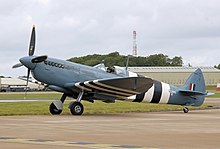
Imagery intelligence (IMINT), pronounced as either as Im-Int or I-Mint, is an intelligence gathering discipline wherein imagery is analyzed to identify information of intelligence value. Imagery used for defense intelligence purposes is generally collected via satellite imagery or aerial photography.

Aerial photography is the taking of photographs from an aircraft or other airborne platforms. When taking motion pictures, it is also known as aerial videography.

Defence Intelligence (DI) is an organisation within the United Kingdom intelligence community which focuses on gathering and analysing military intelligence. It differs from the UK's intelligence agencies in that it is an integral part of a government department – the Ministry of Defence (MoD) – rather than a stand-alone organisation. The organisation employs a mixture of civilian and military staff and is funded within the UK's defence budget. The organisation was formerly known as the Defence Intelligence Staff (DIS), but changed its name in 2009.

Royal Air Force Digby otherwise known as RAF Digby is a Royal Air Force station located near Scopwick and 11.6 mi (18.7 km) south east of Lincoln, in Lincolnshire, England. The station is home to the tri-service Joint Service Signals Organisation, part of the Joint Forces Intelligence Group of Joint Forces Command. Other units include the RAF Aerial Erector School, No. 54 Signals Unit and No. 591 Signals Unit.
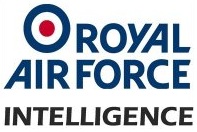
Intelligence services in the Royal Air Force are delivered by Officers of the Royal Air Force Intelligence Branch and Airmen from the Intelligence Analyst Trade and Intelligence Analyst (Voice) Trade. The specialisation has around 1,200 personnel of all ranks posted to operational air stations, HQs and other establishments of the British Armed Forces, both in the United Kingdom and overseas.
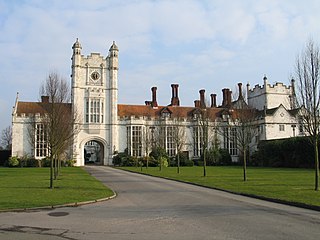
RAF Medmenham is a former Royal Air Force station based at Danesfield House near Medmenham, in Buckinghamshire, England. Activities there specialised in photographic intelligence, and it was once the home of the RAF Intelligence Branch. During the Second World War, RAF Medmenham was the main interpretation centre for photographic reconnaissance operations in the European and Mediterranean theatres.
MI14, or British Military Intelligence, Section 14 was a department of the British Directorate of Military Intelligence. It was an intelligence agency of the War Office, which specialised in intelligence about Germany. Originally part of MI3, during the Second World War the German sub-department's expertise and analysis became so important to the war effort that it was spun off into its own Military Intelligence section.

George William Goddard was a United States Air Force brigadier general and a pioneer in aerial photography.

Dino Antonio Brugioni was a former senior official at the CIA's National Photographic Interpretation Center (NPIC). He was an imagery analyst and also served as NPIC's Chief of Information. During his 35-year career, Brugioni helped establish imagery intelligence (IMINT) as a national asset to solve intelligence problems. Even after retirement, Brugioni was considered to be the world's foremost imagery intelligence analyst.

Arthur Charles Lundahl KBE was a forerunner of American Cold War imagery intelligence (IMINT) and aerial reconnaissance known for his discovery of Soviet missile installations in Cuba in 1962 which led to the Cuban Missile Crisis. He was responsible for establishing the Central Intelligence Agency's National Photographic Interpretation Center, a forerunner of the National Geospatial-Intelligence Agency, and led the photointerpretation section of the U-2 reconnaissance program. Analyzing reconnaissance films, he briefed presidents Eisenhower and Kennedy as well as the nation's top military and diplomatic officials. Lundahl provided critical intelligence on the arms race and many other international crises, including the Suez Crisis; Quemoy and Matsu, islands controlled by Taiwan; Tibet; Lebanon, and Laos.

Aerial reconnaissance is reconnaissance for a military or strategic purpose that is conducted using reconnaissance aircraft. The role of reconnaissance can fulfil a variety of requirements including artillery spotting, the collection of imagery intelligence, and the observation of enemy maneuvers.

No. 1 Photographic Reconnaissance Unit was a flying unit of the Royal Air Force, first formed in 1940.
Aerial reconnaissance using heavier-than-air machines was an entirely new science that had to be improvised step-by-step. Early operations were low-level flights with the pilot often dismounting from the plane to report verbally to the nearest officers. Photographic support was urgently developed, initially requiring a full-time photographer on board to handle the heavy, awkward equipment. The interpreting of aerial images was an important new speciality, essential for accurate mapping. By 1915, air-to-ground radio was in use for reconnaissance pilots.
Group Captain Frederick Charles Victor Laws, was an officer in the Royal Air Force, an aerial surveyor, and the founder and most prominent pioneer of British aerial reconnaissance.
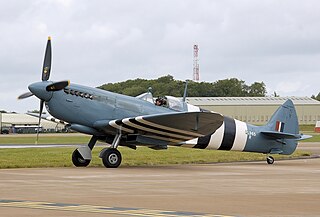
A transformational growth in aerial reconnaissance occurred in the years 1939–45, especially in Britain and then in the United States. It was an expansion determined mostly by trial and error, represented mostly by new tactics, new procedures, and new technology, though rarely by specialized aircraft types. The mission type branched out into many sub-types, including new electronic forms of reconnaissance. In sharp contrast with the case during the pre-war years, by 1945 air reconnaissance was widely recognized as a vital, indispensable component of air power.
The Defence Intelligence Fusion Centre (DIFC) is based at RAF Wyton in Cambridgeshire. Largely created from the staff of the National Imagery Exploitation Centre and then known for several years as the Defence Geospatial Intelligence Fusion Centre, it can trace its history back to clandestine reconnaissance operations at the beginning of the Second World War by Sydney Cotton on behalf of MI6 and then MI4, and the formation of the Allied Central Interpretation Unit at RAF Medmenham.
The Government of the United Kingdom maintains several intelligence agencies that deal with secret intelligence. These agencies are responsible for collecting, analysing and exploiting foreign and domestic intelligence, providing military intelligence, and performing espionage and counter-espionage. Their intelligence assessments contribute to the conduct of the foreign relations of the United Kingdom, maintaining the national security of the United Kingdom, military planning, public safety, and law enforcement in the United Kingdom. The four main agencies are the Secret Intelligence Service, the Security Service (MI5), the Government Communications Headquarters (GCHQ) and Defence Intelligence (DI). The agencies are organised under three government departments, the Foreign Office, the Home Office and the Ministry of Defence.
The Defence School of Photography (DSoP) is a training centre for all photographers drawn from the three arms of the British Military and the Civil Service. The School has been located at RAF Cosford in Shropshire, England since 1963 and in its own purpose built building at Cosford since 1965. The school has gone through several iterations being firstly a Royal Flying Corps school, then a Royal Air Force School, then a Joint school before becoming the DSoP in 2003.
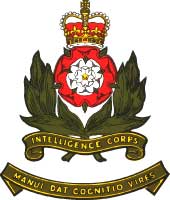
5 Military Intelligence Battalion is an Intelligence Corps Army Reserve unit in the British Army. It is based in Scotland, with sub-units in Edinburgh, Gateshead and Leeds and detachments in Glasgow and Chesterfield. It is partnered with 1 Military Intelligence Battalion, a Regular Army unit based in Catterick Garrison, North Yorkshire.
The National Collection of Aerial Photography is a photographic archive in Edinburgh, Scotland, containing over 30 million aerial photographs of worldwide historic events and places. From 2008–2015 it was part of the Royal Commission on the Ancient and Historical Monuments of Scotland and since then it has been a sub-brand of Historic Environment Scotland. Many of the aerial reconnaissance photographs were taken during the Second World War and the Cold War, and were declassified and released by the Ministry of Defence. The collection also contains over 1.8 million aerial survey photographs of Scotland, during and in the years after the Second World War, as well as post-war Ordnance Survey, over 4 million photogrammetric images, and over 10 million aerial survey images of international sites as part of The Aerial Reconnaissance Archives (TARA). The collection contains both military declassified and non-military aerial photographs from over a dozen different national and international organisations.
